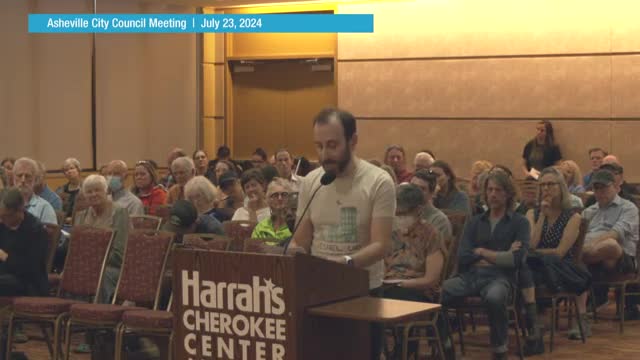Community grapples with controversial housing development plans
July 24, 2024 | Asheville City, Buncombe County, North Carolina

This article was created by AI summarizing key points discussed. AI makes mistakes, so for full details and context, please refer to the video of the full meeting. Please report any errors so we can fix them. Report an error »

During a recent government meeting, community members voiced their concerns regarding proposed developments in East Asheville, emphasizing the need for careful planning to address the housing crisis without compromising the character of the neighborhoods. Jocelyn Durett highlighted the importance of allowing incremental growth throughout the city to prevent hyper-local shocks and speculation, warning against exempting areas like East Asheville from the comprehensive plan. She expressed a desire for her children to be able to afford to live in the area in the future.
Steve Scholl shared a personal anecdote about a past controversy involving a cell tower in a historic neighborhood, illustrating how community fears can sometimes be alleviated over time. He urged residents to consider the potential benefits of development rather than resist it outright.
Chris Pelley, president of the Haw Creek Community Association, detailed ongoing concerns about a proposed development that would introduce 95 homes to a landmark property. He noted that the development plan would significantly reduce the area’s mature tree canopy and increase impervious surfaces, exacerbating stormwater runoff issues. Pelley also raised alarms about wildfire evacuation planning, given the narrow valley's limited exits.
Despite initial resistance, Pelley reported that the community had begun to negotiate with the developer, leading to a proposal that included some community objectives, such as preserving tree canopy and improving connectivity within the neighborhood. He acknowledged the challenges of communication during the negotiation process but expressed cautious support for the revised proposal, urging the city to consider the evolving nature of the community and the necessity of adapting land use policies accordingly.
The discussions underscored the delicate balance between development and preservation, as residents grapple with the implications of growth in their neighborhoods.
Steve Scholl shared a personal anecdote about a past controversy involving a cell tower in a historic neighborhood, illustrating how community fears can sometimes be alleviated over time. He urged residents to consider the potential benefits of development rather than resist it outright.
Chris Pelley, president of the Haw Creek Community Association, detailed ongoing concerns about a proposed development that would introduce 95 homes to a landmark property. He noted that the development plan would significantly reduce the area’s mature tree canopy and increase impervious surfaces, exacerbating stormwater runoff issues. Pelley also raised alarms about wildfire evacuation planning, given the narrow valley's limited exits.
Despite initial resistance, Pelley reported that the community had begun to negotiate with the developer, leading to a proposal that included some community objectives, such as preserving tree canopy and improving connectivity within the neighborhood. He acknowledged the challenges of communication during the negotiation process but expressed cautious support for the revised proposal, urging the city to consider the evolving nature of the community and the necessity of adapting land use policies accordingly.
The discussions underscored the delicate balance between development and preservation, as residents grapple with the implications of growth in their neighborhoods.
View full meeting
This article is based on a recent meeting—watch the full video and explore the complete transcript for deeper insights into the discussion.
View full meeting
